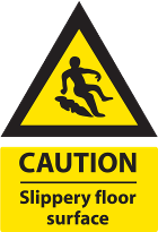Signs For Security Officers
What are safety signs for security officers?
Safety signs can play an important role in helping security officers communicate with the public and enforce safety rules.
What are the more common safety signs relevant to security officers?
Health and safety instructions are conveyed through the use of safety signs, which must be kept in good condition, kept clean, and placed in visible locations. Security personnel must have knowledge of the six different types of signs and their associated colors and shapes.
1. What are Prohibition Signs?
Prohibition signs are a type of safety sign used to communicate the message that a certain behavior or action is not allowed in a particular area. These signs use a round shape with a red border and a diagonal line from the upper left to the lower right, and often have a black pictogram or text inside the circle.
Some common examples of prohibition signs include:
No Smoking signs: These signs indicate that smoking is not allowed in a particular area.
No Entry signs: These signs indicate that entry is not allowed into a particular area.
No Trespassing signs: These signs indicate that trespassing is not allowed on a particular property.
No Parking signs: These signs indicate that parking is not allowed in a particular area.
No Food or Drink signs: These signs indicate that eating or drinking is not allowed in a particular area.
Prohibition signs are an important tool in promoting safety and ensuring that people understand what behavior is not allowed in a particular area.



2. What are Mandatory signs?
Mandatory signs are a type of safety sign used to indicate that a specific action must be taken or a behavior must be followed in a particular area. These signs typically use a blue circle with a white pictogram or text in the center and are used to promote safety and compliance with safety regulations.
Some common examples of mandatory signs include:
Hard hat required: This sign indicates that individuals must wear a hard hat in the designated area.
Eye protection required: This sign indicates that individuals must wear eye protection in the designated area.
Hand protection required: This sign indicates that individuals must wear gloves or hand protection in the designated area.
Foot protection required: This sign indicates that individuals must wear safety shoes or other appropriate footwear in the designated area.
Emergency shower or eyewash station: This sign indicates the location of emergency showers or eyewash stations in case of a chemical spill or other hazardous exposure.
Mandatory signs are an important tool in promoting safety and ensuring that people are aware of specific safety requirements in a particular area.



3. What are Safe Condition Signs?
Safe condition signs are a type of safety sign used to indicate the location of safety equipment, such as first aid stations, emergency exits, and fire extinguishers. These signs use a green rectangular or square shape with a white pictogram or text in the centre and are designed to provide clear and concise information to individuals in case of an emergency.
Some common examples of safe condition signs include:
First aid signs: These signs indicate the location of first aid stations and supplies.
Emergency exit signs: These signs indicate the location of emergency exits and escape routes in case of a fire or other emergency.
Fire equipment signs: These signs indicate the location of fire extinguishers, hoses, and other fire safety equipment.
Emergency shower and eyewash signs: These signs indicate the location of emergency showers and eyewash stations in case of exposure to hazardous materials.
Lifebuoy signs: These signs indicate the location of lifebuoys and other life-saving equipment near water.
Safe condition signs are an important part of promoting safety in a workplace or public area and can help individuals quickly locate necessary safety equipment in case of an emergency.



4. What are Warning Signs?
Warning signs are indicators or signals that suggest a potential problem or danger. They can come in different forms, depending on the context, but generally, they are signs that something is amiss or that there is a risk of harm.
Some common examples of warning signs include:
- Physical signs, such as smoke or fire, a leak, or a strange odor.
- Behavioral signs, such as agitation, aggressive or violent behavior, or a sudden change in mood or demeanor.
- Emotional signs, such as extreme sadness or anxiety, feelings of hopelessness, or expressions of suicidal ideation.
- Health-related signs, such as a persistent cough, unexplained weight loss, or unusual fatigue.
- Financial signs, such as sudden changes in spending patterns, unpaid bills, or unexpected withdrawals from bank accounts.
- Environmental signs, such as unusual weather patterns, rising water levels, or an increase in seismic activity.
It’s important to pay attention to warning signs and take appropriate action to address the underlying problem or risk. Ignoring warning signs can lead to serious consequences, so it’s always best to err on the side of caution and investigate any signs that something may be wrong.



5. What are Fire Safety Signs?
Fire safety signs are signs that provide important information and instructions related to fire prevention, preparedness, and response. These signs are usually displayed in public buildings, workplaces, and other facilities to help people stay safe in the event of a fire.
Some common types of fire safety signs include:
Fire Extinguisher Signs – These signs indicate the location of fire extinguishers and provide instructions for their use.
Fire Alarm Signs – These signs identify the location of fire alarms and provide instructions for how to use them.
Fire Exit Signs – These signs show the way to the nearest exit in case of a fire emergency.
Fire Assembly Point Signs – These signs indicate the designated area where people should gather after evacuating the building in case of a fire.
No Smoking Signs – These signs indicate that smoking is prohibited in certain areas, reducing the risk of fires caused by cigarettes.
Flammable Material Signs – These signs indicate that a certain area contains flammable materials that can be a fire hazard.
Emergency Lighting Signs – These signs indicate the location of emergency lighting, which can help guide people to safety in the event of a power outage.
It’s important to familiarize yourself with the fire safety signs in your workplace or other public areas so that you know how to respond in case of an emergency. Additionally, it’s important to follow fire safety regulations and procedures to minimize the risk of fires and keep everyone safe.



6. What are Hazardous substances Signs?
Hazardous substances signs are signs that warn people of the presence of dangerous materials that may pose a risk to health or safety. These signs are used to communicate information about the potential hazards associated with a particular substance and the precautions that should be taken when handling or working with it.
Some common types of hazardous substances signs include:
Warning Signs – These signs alert people to the presence of hazardous substances and provide information about the type of danger that may be present.
Chemical Hazard Signs – These signs communicate the specific hazards associated with chemicals and provide information about the appropriate safety measures that should be taken when handling them.
Biological Hazard Signs – These signs indicate the presence of biological agents that can cause illness or infection, and provide information about the appropriate protective measures to be taken.
Radiation Hazard Signs – These signs indicate the presence of radioactive materials and provide information about the appropriate safety measures that should be taken when working with or near them.
Explosive Hazard Signs – These signs warn of the presence of explosives and provide information about the potential danger associated with them.
Electrical Hazard Signs – These signs indicate the presence of electrical hazards, such as live wires or high voltage areas, and provide information about the precautions that should be taken when working in these areas.
It’s important to pay attention to hazardous substances signs and follow the safety precautions indicated to minimize the risk of exposure to dangerous substances. In addition, it’s important to receive appropriate training and wear protective gear when working with hazardous materials.


